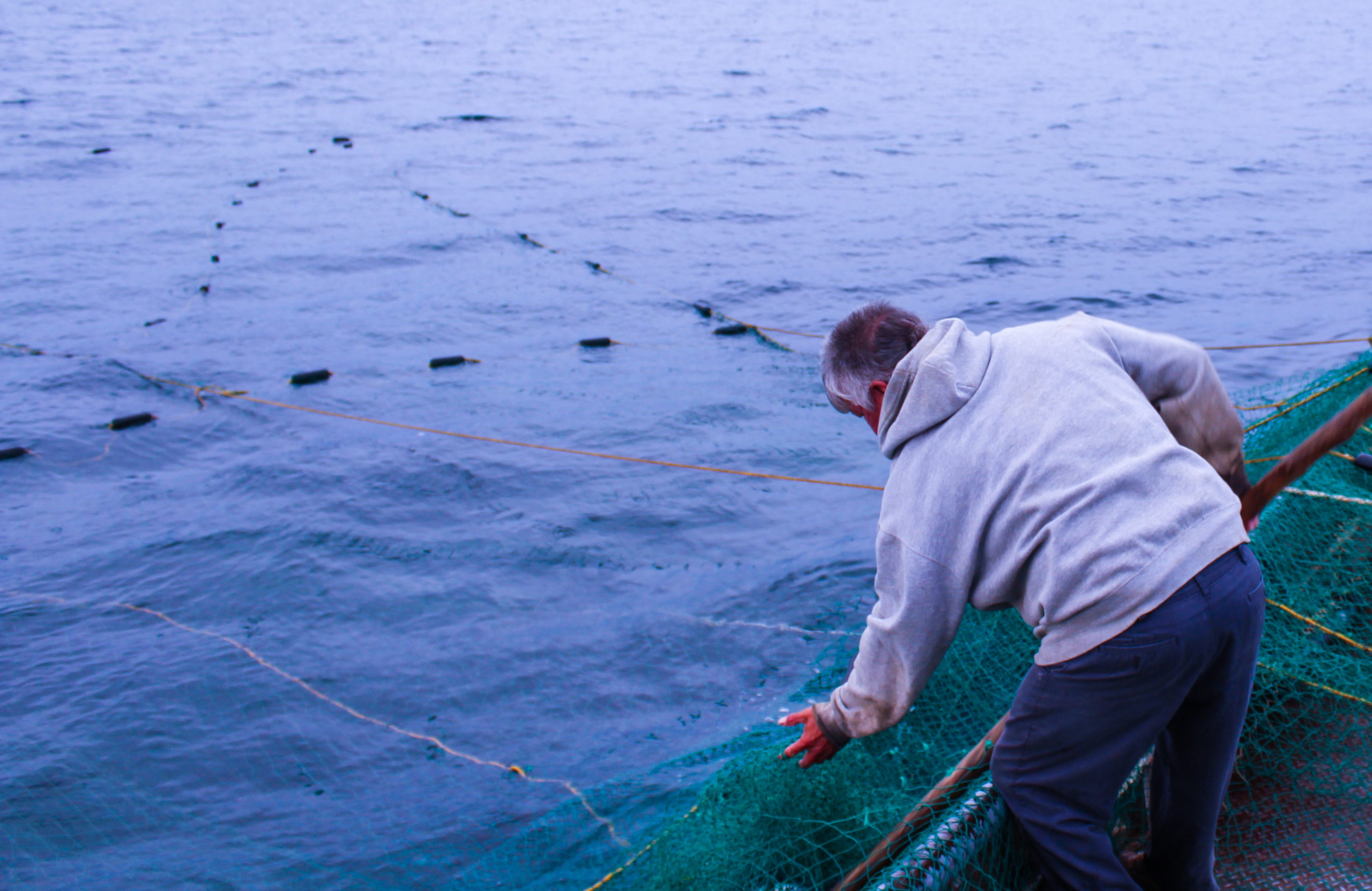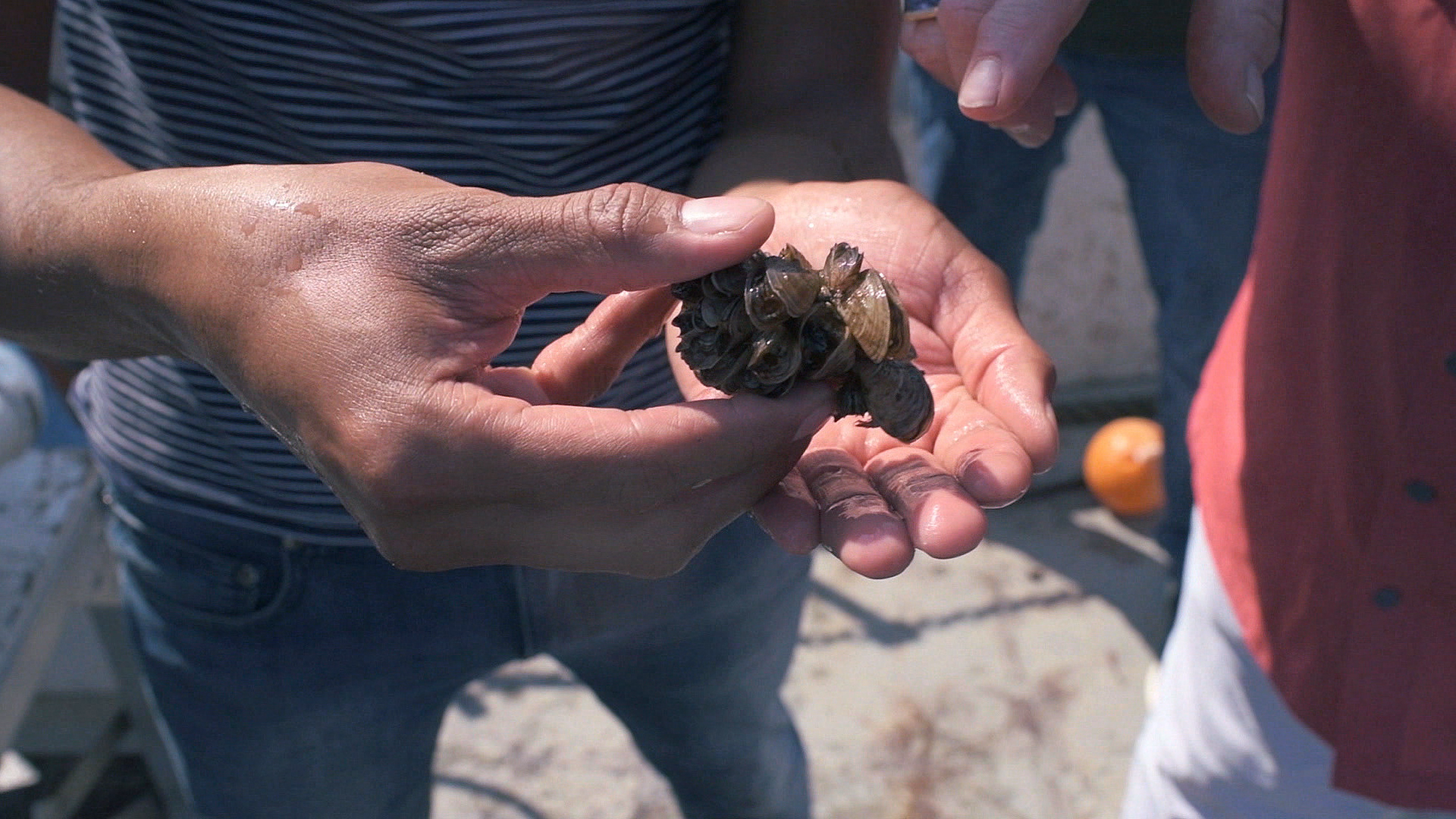
The rules that govern fishing in the Great Lakes – commercially and for sport – are about to change, perhaps dramatically. That’s because Great Lakes fish are a shared resource, and because of profound changes in fish populations, there is less to share.
It’s difficult to know exactly what will change. By design, negotiations between the federal government, the state of Michigan and five Native nations over Great Lakes fishing rights are opaque: The talks happen behind closed doors with a judicial gag order in place.
On the legal end of things, here’s what we know:
The consent decree is an agreement between five Native nations, the federal government and the state of Michigan. It guides how, where, how many and by whom fish can be caught in northern lakes Michigan and Huron, and the eastern end of Lake Superior. Based upon an 1836 treaty, the first consent decree was first enacted in 1985, after a series of disputes over Native fishing rights wound up in federal court. In 1979 the courts upheld Tribal fishing rights, leading to the first Consent Decree. That iteration was updated in 2000, and was set to expire in August 2020.

John Boucher fishing rapids (Photo courtesy of the Bay Mills Indian Community)
Proceedings stalled due to COVID-19 – plus a disagreement among the five Tribes who are signatories to the Decree. The Sault Ste. Marie Tribe insisted that during negotiations, the court remove “exclusive fishing zones,” areas that were open to fishing by all Tribes in the first Consent Decree in 1985 but then refined in 2000 to limit that areas where each Tribe could fish. Additionally, the Sault Tribe argued that the pandemic only held up talks for 90 days and so only an extension of 90 days, to November 8, was warranted.
The remaining four Tribes – plus the state and feds – sought to extend the deadline to Dec. 31 to allow negotiations to continue without a “regulatory gap.”
In July 2020, U.S. District Judge Paul L. Maloney ruled against the Sault motions, leaving the exclusive fishing zones in place: “The Sault Ste. Marie Tribe presents nuanced, fact-heavy issues that are impossible to evaluate at this stage, and the Court is not interested in issuing a decision on the merits of an issue that is still being negotiated.”
Maloney also extended the deadline to Dec. 31, 2020, noting “the coronavirus pandemic has drastically altered life for all parties involved.” On Dec. 8, Judge Maloney amended the Decree again, extending the expiration date to June 30, 2021.
Related stories on Great Lakes Now:
Federal Relief: Great Lakes fisheries finally get a cut of COVID-19 relief funds
A big fight in Lansing over fishing rules on the Great Lakes
Commercial fishing and the consent decree
Populations of the fish species at the heart of the decree – whitefish, lake trout and salmon – are nothing like they were in 2000. Invasive mussels have sucked most of the nutrients to the bottom of lakes Michigan and Huron, changing the food web so profoundly that entire species have collapsed, others are on the brink, and still others have come on strong.
So whatever rules are set for commercial and sport fishing in lakes Huron, Michigan and Superior can’t possibly look anything like they did the last time the groups convened.
“With the 2000 consent decree, all the parties thought the allocation agreement was pretty equitable and worked for their specific needs,” said Jim Johnson, a retired fisheries biologist with the Michigan Department of Natural Resources, who had a front-row seat to Lake Huron’s dramatic transformation in the early 2000s. “We had a good assessment of the whitefish out there, and we knew the chinook salmon population was doing really good. We took for granted that that would all be there in 20 years.”
But now the population balance has changed, and that matters to folks who make a living on Great Lakes fish. Commercial fishers, who are mostly Native but also include about a dozen state-licensed operations, are mostly after whitefish. But whitefish numbers have declined and commercial nets are often full of lake trout fishermen can’t keep. They’d like that limit to change.
Charter boat operators and recreational anglers prize salmon, whose numbers are also down, so they often turn to lake trout to keep their paying customers catching something. They’re hoping catch limits on lake trout aren’t cut.

Whitney Gravelle, chairwoman of the Bay Mills Indian Community (Photo courtesy of the Bay Mills Indian Community)
But all of that, by law, is secondary to the Native fishing rights that were secured in the 1836 Treaty of Washington, in which Native people ceded 14 million acres of land to the United States in exchange for fishing rights in parts of the three upper Great Lakes. That land became Michigan the following year.
“Our ancestors carved out the right to fish and hunt, and that includes right to commercial fish,” said Whitney Gravelle, the recently elected chairwoman of the Bay Mills Indian Community, earlier this year. “What a lot of people don’t realize is that in reserving those rights, our ancestors were already looking ahead, knowing that fishing is an integral part of our lives, how we provided for our families. It’s not just reserving right to commercially sell fish. It’s also reserving right to feed our families and preserving the resource for the next seven generations. Any action you take today should be considered how that will impact the seven generations that come after you. I’m really glad our ancestors had that foresight.”
Signatories to the consent decree are the Bay Mills Indian Community, Grand Traverse Band of Ottawa and Chippewa Indians, Little River Band of Ottawa Indians, Little Traverse Bay Bands of Odawa Indians, Sault Ste. Marie Tribe of Chippewa Indians, the State of Michigan, and the United States.
Population decline
The decline of salmon and whitefish can both be traced back to the arrival of invasive mussels that entered the Great Lakes in the ballast of ocean-going ships. Those ships had taken on water in the Black Sea as extra weight, crossed the Atlantic Ocean and off-loaded their ballast – and the critters it contained – in the Great Lakes. Zebra mussels were first discovered in the Great Lakes in 1989, followed shortly thereafter by quagga mussels.
Quagga mussels in time numbered in the quadrillions and were efficient filter feeders that sucked all the tiny nutrients out of the lakes. That left upper portions of the water column virtually empty of phytoplankton – tiny creatures that feed small fish, which feed bigger fish, which feed the biggest fish. Take out phytoplankton, and the whole system goes haywire.

A researcher holds a clump of quagga mussels taken from the wreck of the Prins Willem V, in Lake Michigan near Milwaukee. (From the Milwaukee PBS program “Shipwrecks of Milwaukee”)
Salmon had spent decades getting fat on the mid-sized alewives, but the lack of food starved out alewives and the salmon weren’t far behind, especially in Lake Huron. On the Lake Michigan side, the state reduced its massive salmon stocking to prevent another collapse of alewives. That appears to have worked, but with fewer stocked fish there just aren’t as many salmon to catch.
Matt Hehn is a charter captain who fishes Lake Erie for much of the season but focuses his attention on salmon for the month of August, when he fishes out of Frankfort on Lake Michigan. He said it’s critical to his operation that folks catch something, and when salmon aren’t there that something is lake trout.
“If we could hold our limit similar to now, that’s two lake trout per person, which generally seems like enough fish for most people,” he said, adding that a single-trout limit in recent years forced some captains to fish inland lakes where catch limits were more generous. “The resource has gotten smaller. Those zebra and quagga mussels are putting pressure on the system.”
Whitefish, which can live two decades or more, were able to feed on mussels and another invasives – round gobies, a small fish – but their young had nothing to eat, and they too starved. Eventually there were no young whitefish to replace the ones being caught, and the number of commercially caught whitefish has declined precipitously.
Johnson estimates only 20% of historic whitefish biomass is still in lakes Michigan and Huron.

Ken King (Photo courtesy of Ken King)
Ken King, a Sault Tribe member whose family has run a commercial fishing operation in northern Lake Michigan since the 1940s, says his catch bears that out.
“I’ve fished some of these grounds since the 1980s,” he said. “There were times you could go out and come home with 10,000 or more pounds of whitefish. Now in that same area, you can lift all your nets and you’re lucky to get a few hundred pounds. And the fish are all bigger fish. We aren’t seeing the smaller ones.”
Meanwhile, lake trout numbers are way up in places, thanks to continued stocking and some natural reproduction. Plus, the 2000 consent decree allotted $17 million for tribal fishers to trade in gill nets, which kill caught fish, for trap nets, which allow bycatch to be released alive. Lake trout mortality plunged, Johnson said.
The higher lake trout numbers are likely a sticking point for the consent decree. Tribal commercial fishers can only keep a certain number of lake trout, but there are times when lake trout fill their nets so heavily it’s barely worth the effort to catch a few whitefish.
King said he’s hoping that the updated consent decree will allow commercial fishers to keep some of the lake trout that come up in their nets even when they aren’t targeting them.
“What I would like to see is us be able to bring the fish we catch to market, within reason,” he said. “Fishermen are always going to protect the resources. We’re not going to fish ourselves out of a job.”
Dave Spratt is a freelance writer and CEO of the Institute for Journalism & Natural Resources.
Catch more news on Great Lakes Now:
Fisheries Fight: Michigan commercial fishers bring MDNR rules to court
Great Lakes Fishery: The start of the industry and the fall of fish populations
Great Lakes Fishery: Commercial vs. recreational conflict
How Microfishing Took the Angling World by (Very Small) Storm
On Michigan’s inland lakes, ice fishing with less ice, and fewer fish
API key not valid. Please pass a valid API key.Featured image: Bay Mills Tribal Fisher – Jacques LeBlanc Sr. (Photo courtesy of the Bay Mills Indian Community)
3 Comments
-
Your article was fair, but left out a few things. First, the State and Tribes are looking at changing both the Consent Agreement, and the Rules the State has for their Commercial Fishers. Two separate things. Also, Tribes in the Western U.P. Fish Commercially under a different agreement. Next, alewives had more issues with a disease than mussels. Plus, herring numbers are actually rising, considerably in some areas. Also, State Licensed Sport Fishers were limited to 1 or 2 fish, not because of scarcity of trout. Rather, an excess. The 2000 set limits. With the bloom in trout, State Fishers were catching to many, and did not want to violate the 2000 agreement. Thus, the low limit. I am a Writer. I do this for a living. I have done my research.
-
Your decrees are very important for the population! Correct policy only benefits the population!
-
Thanks




